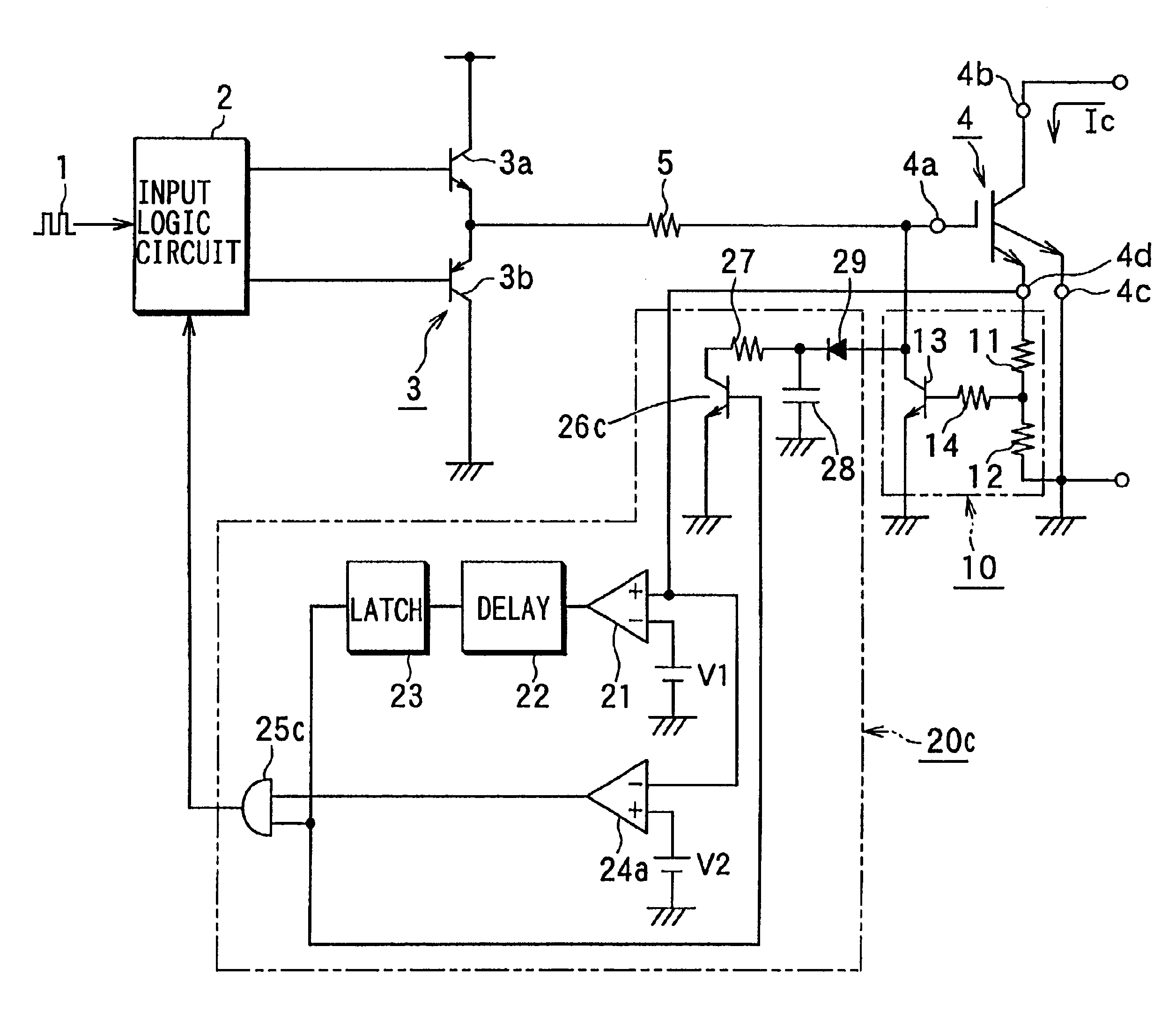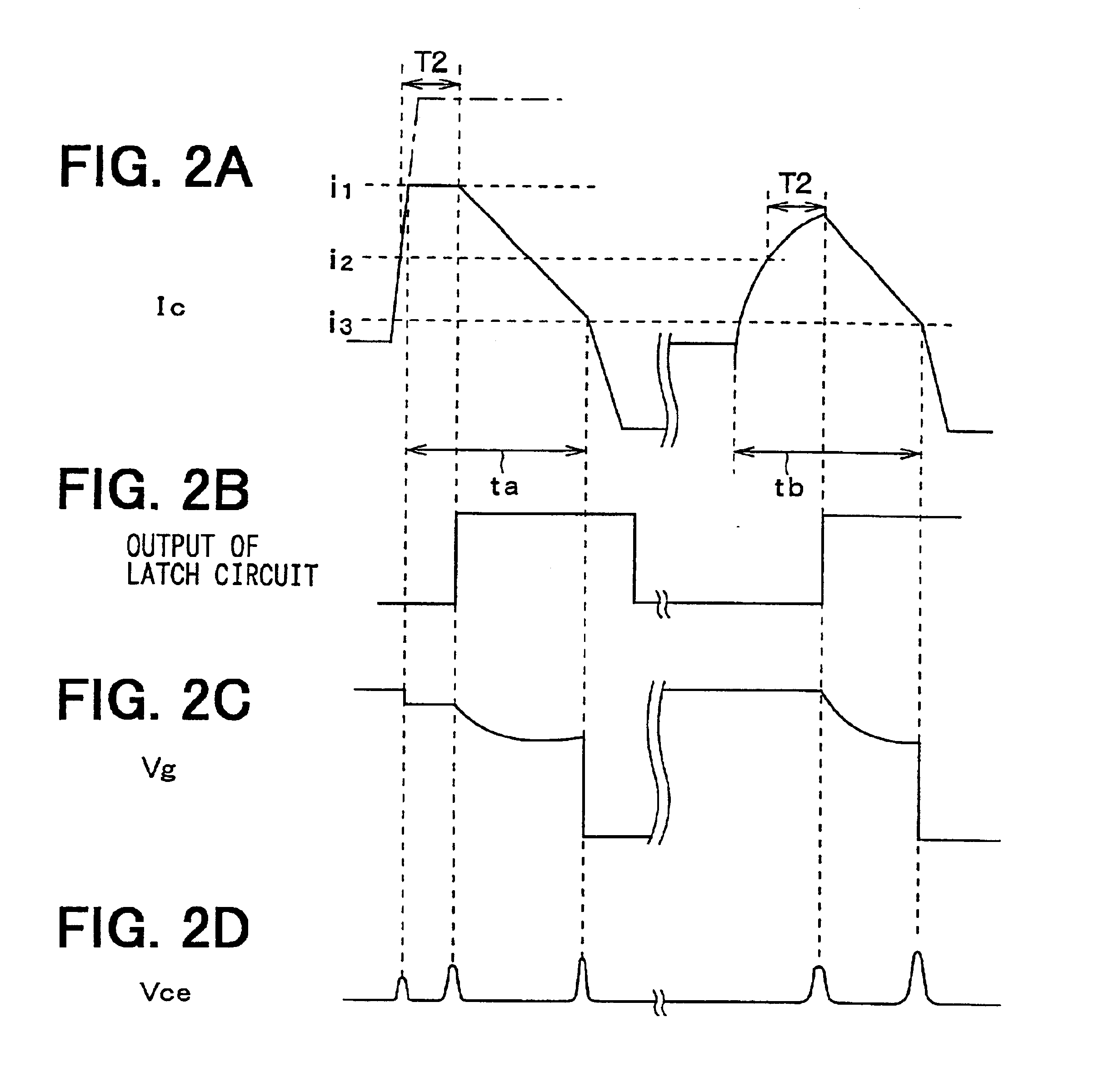Semiconductor switching element driving circuit
a switching element and driving circuit technology, applied in the direction of electronic switching, pulse technique, electrical apparatus, etc., can solve the problems of high current change rate, and inability to maintain malfunction withstand capacity,
- Summary
- Abstract
- Description
- Claims
- Application Information
AI Technical Summary
Benefits of technology
Problems solved by technology
Method used
Image
Examples
first embodiment
FIG. 1 illustrates a circuitry of a semiconductor switching element driving circuit to which a first embodiment of the invention is applied. This semiconductor switching element driving circuit is for use in driving each of semiconductor switching elements of a motor driving circuit of the electric vehicle or the like as shown in FIG. 12. Hereafter, the description of the semiconductor switching element driving circuit will be made according to FIG. 1.
The semiconductor switching element driving circuit shown in FIG. 1 comprises an input logic circuit 2 to which an input signal 1 such as a PWM signal or the like is inputted, a driver circuit 3 controlled by the input logic circuit 2 to turn it on / off, an IGBT 4 for performing switching in response to the turn on / off of the driver circuit 3, an overcurrent limiting circuit 10 for limiting a flow of an overcurrent (short circuit current) that flows to the IGBT 4 and becomes enormously large in a relatively short time, and an overcurren...
second embodiment
FIG. 3 illustrates a circuitry of a semiconductor switching element driving circuit in a second embodiment. The semiconductor switching element driving circuit in this embodiment is partially modified the circuitry with respect to the first embodiment and thus only different portions will be described.
As shown in FIG. 3, the semiconductor switching element driving circuit in this embodiment has different configuration of an overcurrent protection transistor 26b from the overcurrent protection transistor 26a shown in FIG. 1. That is, in a second comparator 24b, the gate voltage of an IGBT 4 is compared with a predetermined voltage V3. Moreover, a change in a decreasing ratio of the collector Ic is controlled by an overcurrent protection transistor 26b based on an output of this second comparator 24b. Namely, the comparator 24b serves as the comparator 24a in the first embodiment. It is noted that a circuit for turning off the transistor 26b after the IGBT 4 is cut off is not shown in...
third embodiment
FIG. 4 illustrates a circuitry of a semiconductor switching element driving circuit in a third embodiment. The semiconductor switching element driving circuit in this embodiment is partially modified the circuitry with respect to the first embodiment and thus only different portions will be described.
As shown in FIG. 4, a turning on / off of an overcurrent protection transistor 26c is controlled according to an output signal of a latch circuit 23. Additionally, the input logic circuit 2 controls turning on / off of a driver circuit 3 based on an output of an AND circuit 25c to which output signals of the latch circuit 23 and the second comparator 24a are inputted.
Therefore, when the overcurrent is about to occur for a relatively long time, the overcurrent protection transistor 26c is turned on to decrease the collector current at the first inclination as shown in FIG. 2 and subsequently the sink driver 3b of the driver circuit 3 is turned on to decrease the collector current at the seco...
PUM
 Login to View More
Login to View More Abstract
Description
Claims
Application Information
 Login to View More
Login to View More - R&D
- Intellectual Property
- Life Sciences
- Materials
- Tech Scout
- Unparalleled Data Quality
- Higher Quality Content
- 60% Fewer Hallucinations
Browse by: Latest US Patents, China's latest patents, Technical Efficacy Thesaurus, Application Domain, Technology Topic, Popular Technical Reports.
© 2025 PatSnap. All rights reserved.Legal|Privacy policy|Modern Slavery Act Transparency Statement|Sitemap|About US| Contact US: help@patsnap.com



